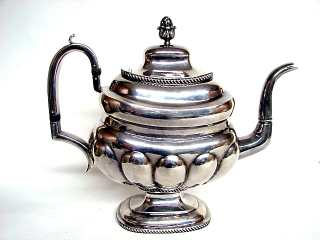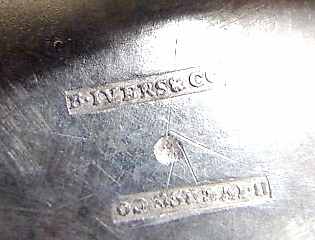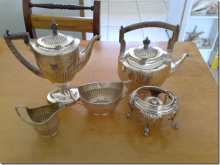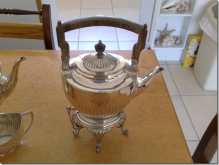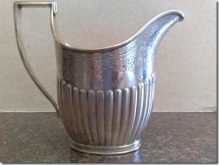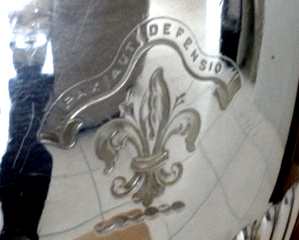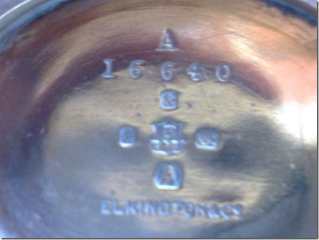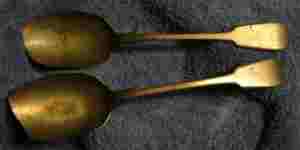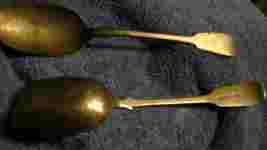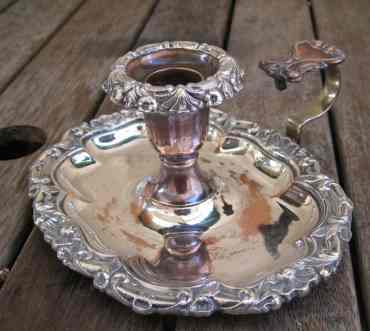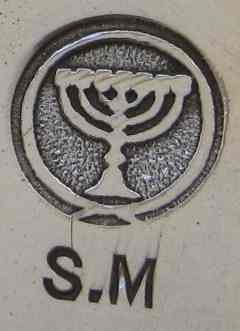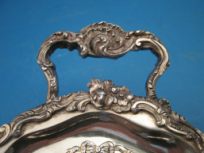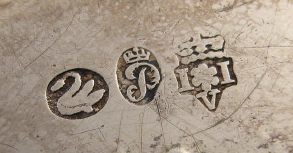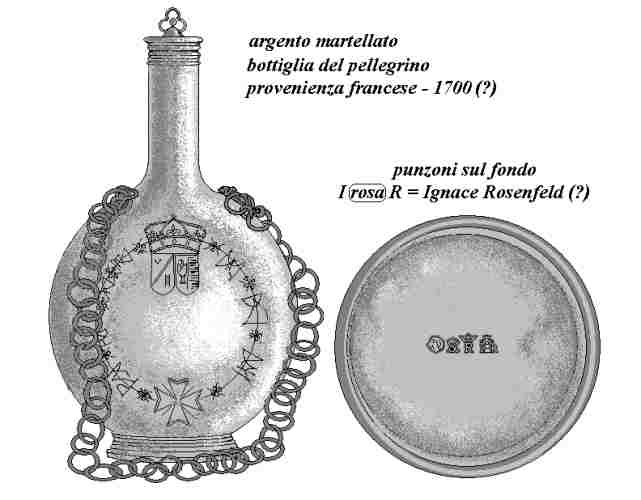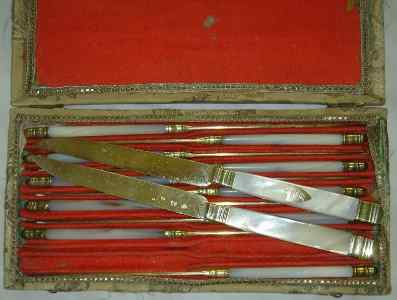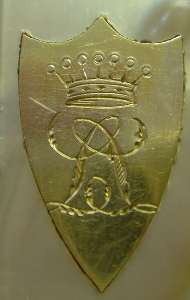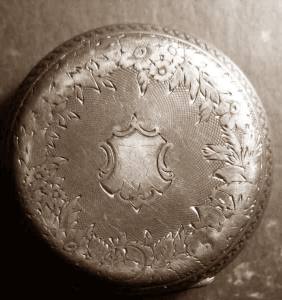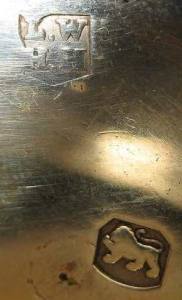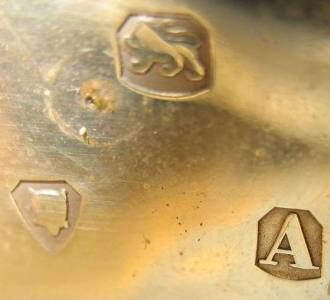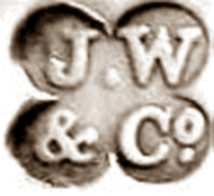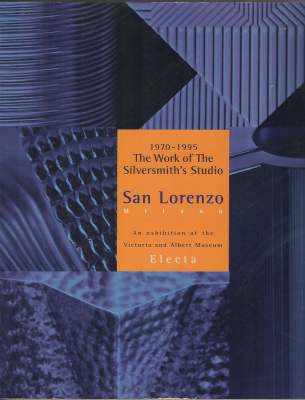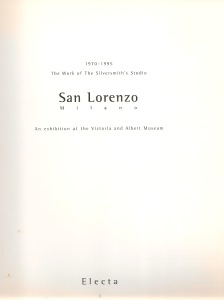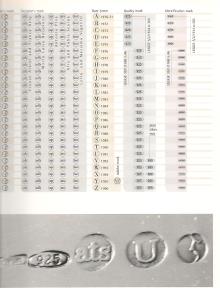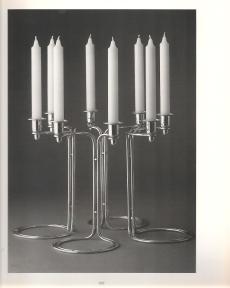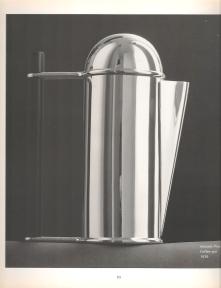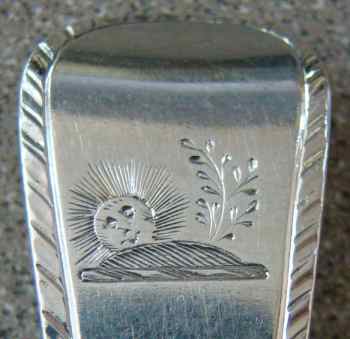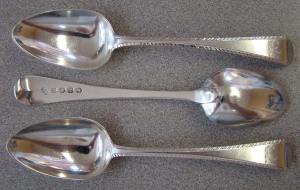 newsletter # 92 January 2012
newsletter # 92 January 2012www.ASCASonline.org SITE MAP
email: silverassociation@yahoo.it
YOUR GUIDE TO JANUARY NEWSLETTER:
articles
new
members
members' window
|
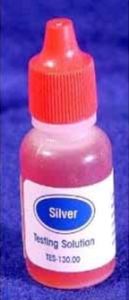
Andrea Menarini presents:
|
New members
Welcome to new ASCAS members:
Jill Prasnicki - USA
Keith Scott - England UK
Simone Spinozzi - Italy
Douglas Wilson - England UK
|
top page -
page map |
Members' Window # 92
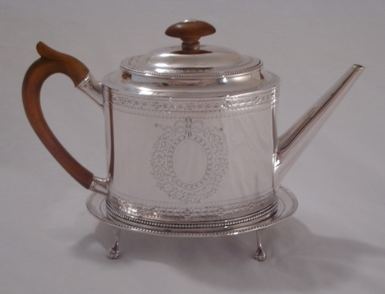
Joanne and Emmett Eldred
present:
|
Mail to ASCAS: e-mail silverassociation@yahoo.it
Jurij Kastorsky writes:
...I have a teapot marked B. Ivers & Co. I research information
about its origin and maker. I'd wish also to know if the metal
is sterling silver or silver plated.
Any idea?
Thank you
Jurij
I believe that B.Ivers & Co is an US maker, early 20th
century, but I was unable to find detailed information about it.
I do not know if your item is sterling silver or silverplate.
Any suggestion will be appreciated
Giorgio Busetto
Tony Absolom writes:
... Recently I came into possession of some silver plate. It
consists of a Tea pot, plus warmer, a coffee pot, milk jug and
sugar bowl.
The hallmarks seem to indicate that they were manufactured in
1868 by Elkingtons.
I would be grateful if someone could indicate the origin and
meaning of the crest (as shown on photo). It is a Fleur de Lys
with the words "Pax aut Defensio" in a banner above the crest.
There are also the letters A 16640 on all the pieces, at the
back with the hallmarks.
I assume this either stands for the pattern or perhaps the
customer order.
Could anybody enlighten me please.
Tony Absolom
I found that the motto Pax aut Defensio (Peace or
defense) was used also by Landale family (Scotland). But, its
crest, described as "a dexter arm, embowed, hand holding up two
branches of laurel, in orle", do not correspond to that in your
tea pot.
The date letter on the mark is not well readable, but I believe
that it corresponds to 1886 (see my web site at
http://www.silvercollection.it/Elkington.html
Giorgio Busetto
John Eiring writes:
....I am trying to identify the marks on two silver spoons. I
think they were made by William Pugh in Birmingham but I can't
match the marks to anything I can find.
Any help would be appreciated.
Thank You,
John
The maker is William Page & Co. See my website at
http://www.silvercollection.it/electroplatesilverNOPtre.html
Giorgio Busetto
Simon Buxton writes:
....I wonder whether you or one of your members can assist in
identifying the maker of an Old Sheffield Plate chamberstick?
The marks, a menorah with the letters S.M below, are rather like
those of Barker-Ellis in the early 20thC, but the method of
manufacture is not electroplate and would date to 1825-1850.
The base is typical Old Sheffield plate with silver mounts, but
the stem, sconce (also with silver mount) and handle now appear
brass or copper and I think would have originally been "French
plated", a technique of applying layers of thin silver foil for
plating small items but resulting in a surface that was very
prone to wear and has now worn away. Those parts might also have
been very early electroplated before assembly, but unlikely.
I don't think it is English but more likely French or European,
but I have been unable to trace anything on the net or in my
reference books, apart from Barker-Ellis.
Thanks
Simon Buxton
In my opinion the mark is similar to that used by Barker
Brothers since November 1912 (Ellis was purchased in 1931).
Giorgio Busetto
Replies to questions
Enzo Vanarelli
receives this answer about his tray
(see December 2011 Newsletter)
Maria Entrup-Henemann writes:
... Concerning the tray of Enzo Vanarelli: The swan could be
the city mark of Zwickau (Germany)
Maria Entrup-Henemann
Maria Bigliani
receives this answer about her bottle
(see December 2011 Newsletter)
Christophe Ginter writes:
...Regarding Maria Bigliani's request, the item shows (very
poor) imitations of French Parisian hallmarks used during the
XVIIIth century.
These marks do not pass a very simple exam, i.e. French ancient
marks were never struck (punched) side by side on the same line.
These are "fantasy" or "apocryphal" marks that were made on
demand in Hanau, or in some English or Italian cities during the
fall of the 19th century or early 20th one. Hence a possible
dating.
Christophe
Vladimir receives
this answer about his knives
(see November 2011 Newsletter)
Pierre Strobbe writes:
... The "crest is only a crown of a Belgian baron plus his
initials.
Pierre Strobbe
"A PAGE per MONTH"
In this column we present a page obtained from makers'
brochures, books, auction catalogs, advertising or whatever
other printed paper, related to silver, that may be of interest
for ASCAS members.
The images will be published at a "low resolution" level and for
private and personal use only
This month ASCAS presents a " MEMORANDUM" accompanying a pocket
watch manufactured by
"A WORD per MONTH"
In this column we
present an abstract from a page of the "What is? Silver
Dictionary"
courtesy of


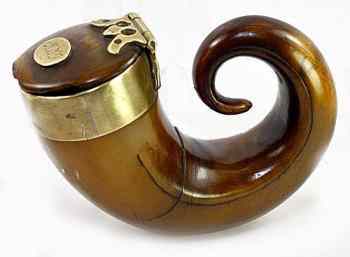
|
SNUFF MULLThe practice of inhaling powdered tobacco became
common in Europe in the 17th century and universally
among both sexes throughout the 18th.
|
"A SILVERSMITH per MONTH"
In this column
we present marks, information and history of silversmiths and
silver manufacturers.
This column is published under the kind permission of Giorgio
Busetto's website


JOSIAH WILLIAMS & CO LTDThe firm was the largest
manufacturing silversmiths in England outside London,
Birmingham and Sheffield. The activity was established
in Bristol by William Woodman at the beginning of the
19th century (pieces with his mark date from c. 1818 to
c. 1838).
|
"A BOOK ON MY SHELF"
In this column we present books, new
or ancient, dealing with silver in all its aspects (history,
marks, oddities...). This isn't a "book review" but only a fair
presentation of some useful "tools" that anyone may have in the
shelf of his bookcase.
ASCAS members are invited to contribute to this column
(click to enlarge images)
In the "book on my shelf" of this month ASCAS presents:
"A CREST per MONTH"
In this column we present images and descriptions of Crests and Mottoes of British, Irish and Scottish families as engraved on silver items.

Custom Search
Closing our January 2012 edition of ASCAS Newsletter I hope you have appreciated its content.
Your comments, suggestions and advice will be of great help.
My thanks to Tony Absolom, Simon Buxton, Charles C. Cage, John Eiring, Joanne and Emmett Eldred, Maria Entrup-Henemann, Christophe Ginter, Jurij Kastorsky, Andrea Menarini and Pierre Strobbe for their invaluable contributions.
Giorgio Busetto
Secretary
ASCAS is a community of people having a common
interest in antique silver.
|

